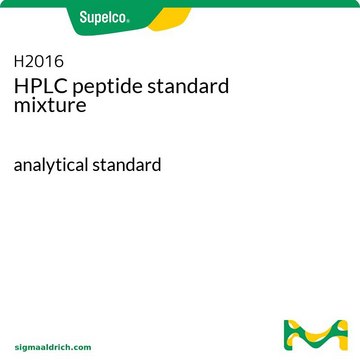S8692
Sulprostone
≥95% (HPLC), oil
Synonyme(s) :
(5Z,11α,13E,15R)--11,15-Dihydroxy-9-oxo-16-phenoxy-17,18,19,20-tetranorprosta-5,13-dienoic acid methane sulfonamide, CP-34089, SHB-286, ZK-57671
About This Item
Produits recommandés
Essai
≥95% (HPLC)
Forme
oil
Couleur
colorless to yellow-brown
Solubilité
DMSO: >10 mg/mL
Conditions d'expédition
wet ice
Température de stockage
−20°C
Chaîne SMILES
CS(=O)(=O)NC(=O)CCC\C=C/C[C@@H]1[C@@H](\C=C\[C@@H](O)COc2ccccc2)[C@H](O)CC1=O
InChI
1S/C23H31NO7S/c1-32(29,30)24-23(28)12-8-3-2-7-11-19-20(22(27)15-21(19)26)14-13-17(25)16-31-18-9-5-4-6-10-18/h2,4-7,9-10,13-14,17,19-20,22,25,27H,3,8,11-12,15-16H2,1H3,(H,24,28)/b7-2-,14-13+/t17-,19-,20-,22-/m1/s1
Clé InChI
UQZVCDCIMBLVNR-TWYODKAFSA-N
Application
Actions biochimiques/physiologiques
Mention d'avertissement
Danger
Mentions de danger
Conseils de prudence
Classification des risques
Eye Irrit. 2 - Repr. 1B - Skin Irrit. 2 - STOT SE 3
Organes cibles
Respiratory system
Code de la classe de stockage
6.1C - Combustible acute toxic Cat.3 / toxic compounds or compounds which causing chronic effects
Classe de danger pour l'eau (WGK)
WGK 3
Point d'éclair (°F)
Not applicable
Point d'éclair (°C)
Not applicable
Équipement de protection individuelle
Eyeshields, Gloves, type ABEK (EN14387) respirator filter
Faites votre choix parmi les versions les plus récentes :
Déjà en possession de ce produit ?
Retrouvez la documentation relative aux produits que vous avez récemment achetés dans la Bibliothèque de documents.
Notre équipe de scientifiques dispose d'une expérience dans tous les secteurs de la recherche, notamment en sciences de la vie, science des matériaux, synthèse chimique, chromatographie, analyse et dans de nombreux autres domaines..
Contacter notre Service technique









